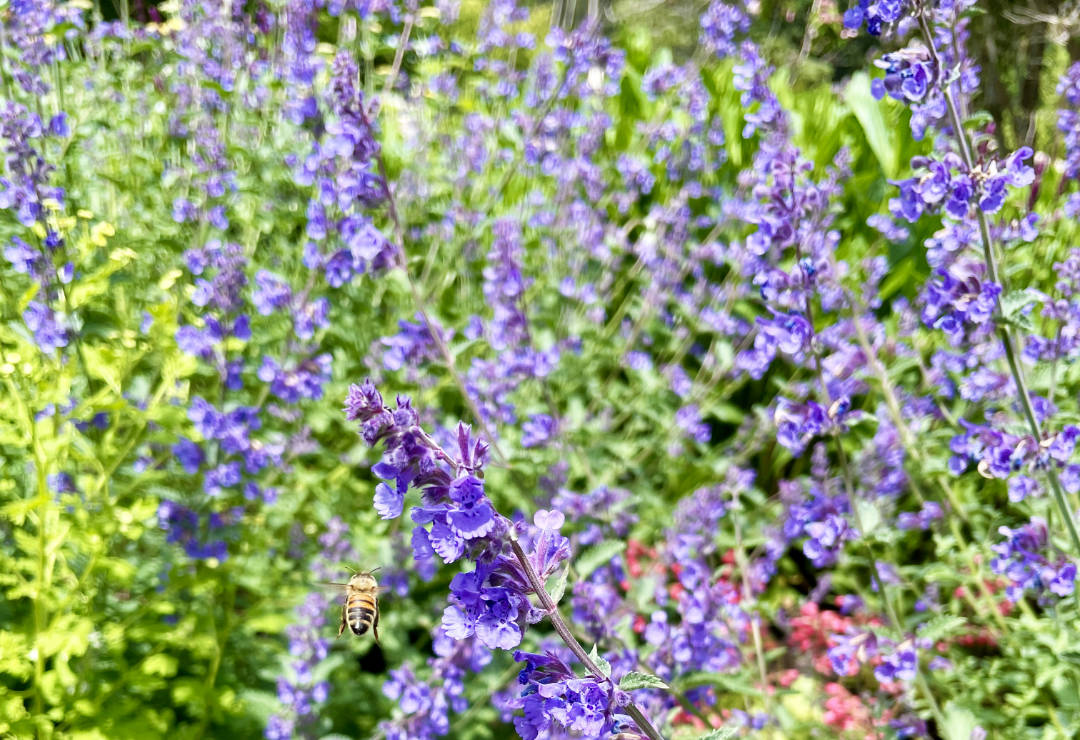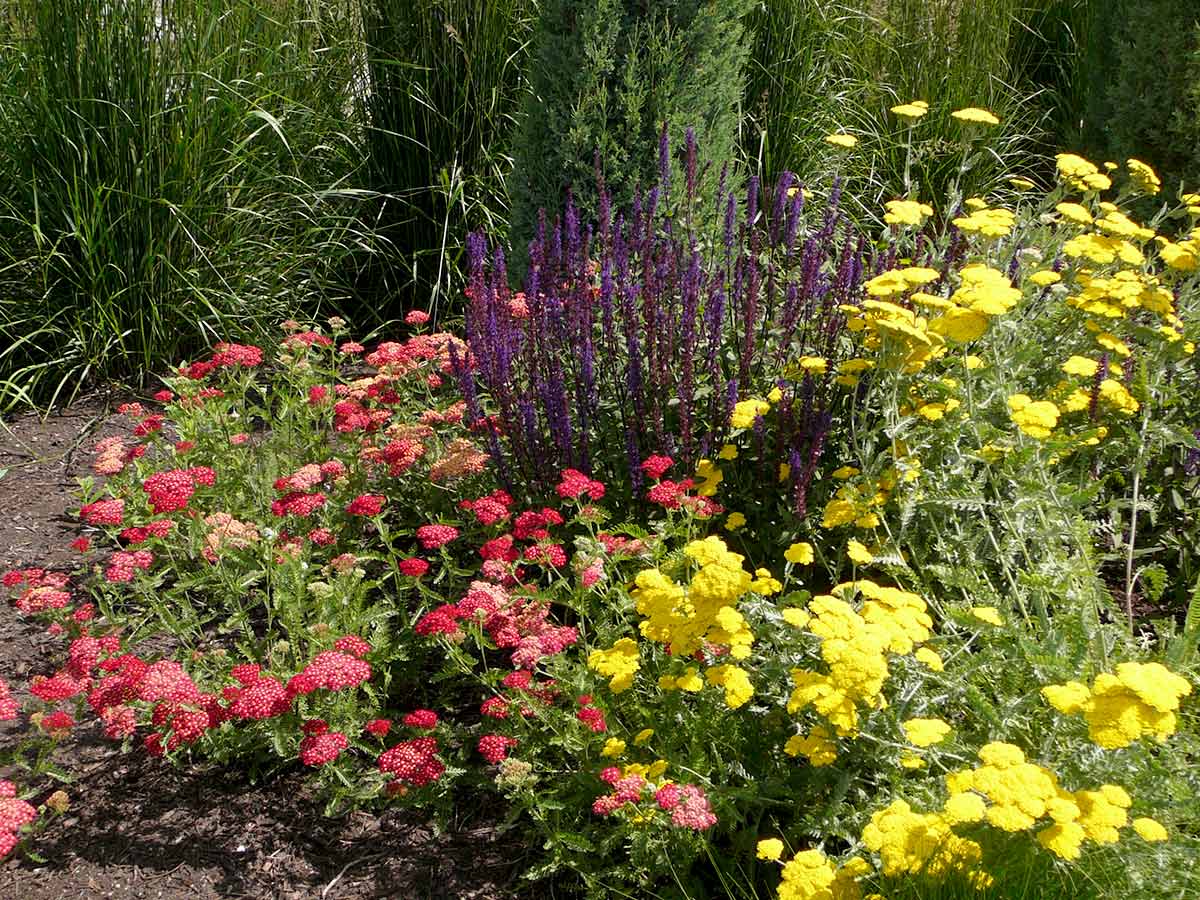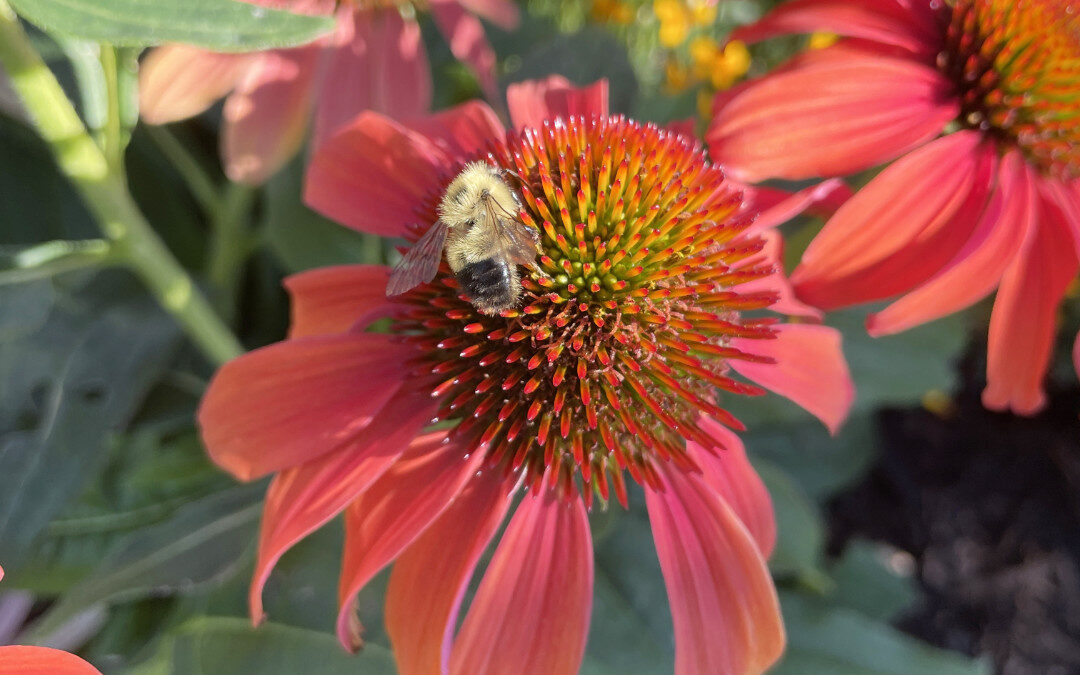Gardening with Nature
Article by Sigrie Kendrick
Keep vital pollinators thriving with your plant choices
Pollinators have great access to food during the summer months when there is a buffet of flowers
blooming on every corner and in every meadow—but what about food for them in early spring and late
fall?
We need to make plant choices for our landscapes that are focused on extending the seasonal banquet
table for these vital little critters by choosing pollinator-friendly plants that provide food for them on the
shoulders of summer.
That should include both native and non-native xeric plants which will require little supplemental irrigation
once established, so we’re not wasting any of our precious resource, water.
It’s estimated that 90 percent of flowering plants need pollinators such as bees and butterflies to
reproduce. That includes a third of the food we eat, such as nuts, fruit, vegetables, and herbs that require
insect pollination.
As we pave over wild lands and build on meadows, we destroy natural habitat and food for pollinators, so
it’s essential that we pay more attention to planting food sources to keep these little insects alive and
thriving and reverse the current trend of their decline.

Recently the Okanagan Xeriscape Association collaborated with Kelowna Rotary Clubs on the creation
of two pollinator gardens located at Sarsons Beach Park, 4398 Hobson Rd. and Cameron Park, 2345
Richter St. in Kelowna.
These gardens have been a year in the making and it was fantastic to finally get shovels in the ground as
OXA, Rotary, and Kelowna’s Parks Department worked together to design and ultimately plant up these
spaces.
Both were designed to have both early and late-blooming perennials to support longer access to food for
pollinators.
Early bloomers in the gardens are the shrub Amelanchier alnifolia, commonly known as Saskatoon berry,
Corsican violets and the native Penstemon fruiticosus or Shrubby Penstemon.
We also included several Achillea millefolium, known commonly as Yarrow, as studies from Simon Fraser
University have shown that this perennial, which is native to the Okanagan, is by far the most appealing
to the largest number of pollinators.
Achillea millefolium will be visited by Hairy Belly Bees, Sweat Bees, Mining Bees, Butterflies, Flies,
Wasps, and Beetles.
With prompt removal of the blooms, we should get 3 bloom periods from the Achillea millefolium as well
as the Nepeta racemosa that we planted. It’s a standout pollinator perennial.
Blooming later in the season, Asclepias speciosa, Showy Milkweed, will support Monarch butterflies as
this perennial is a host plant for females to lay their eggs.
The exceptionally long-blooming Colorado Gold Gazania and Coronado Red Hyssop will round out the
season, blooming until frost.
All of the plants selected were purchased from responsible growers as many nursery plants have been
treated with toxic insecticides, known as neo-nicotinoids, which are harmful to pollinators.
Pollinator Corridor
Rotary Clubs of Kelowna have partnered with Rotary Clubs across the B.C. Interior to establish a
pollinator corridor stretching from Clearwater to Osoyoos to support the growth in populations of bees,
butterflies and other pollinators in our valley.
Visit these public gardens to see the bee-friendly gardens in person and consider planting a pollinator
garden in your own backyard to provide support for these little heroes, who are suffering from the
effects of pollution and climate change.

Sigrie Kendrick is a Master Gardener and Executive-Director of the Okanagan Xeriscape Association. She can be reached at 778-363-8360 or by email at exec_dir@okanaganxeriscape.org.

